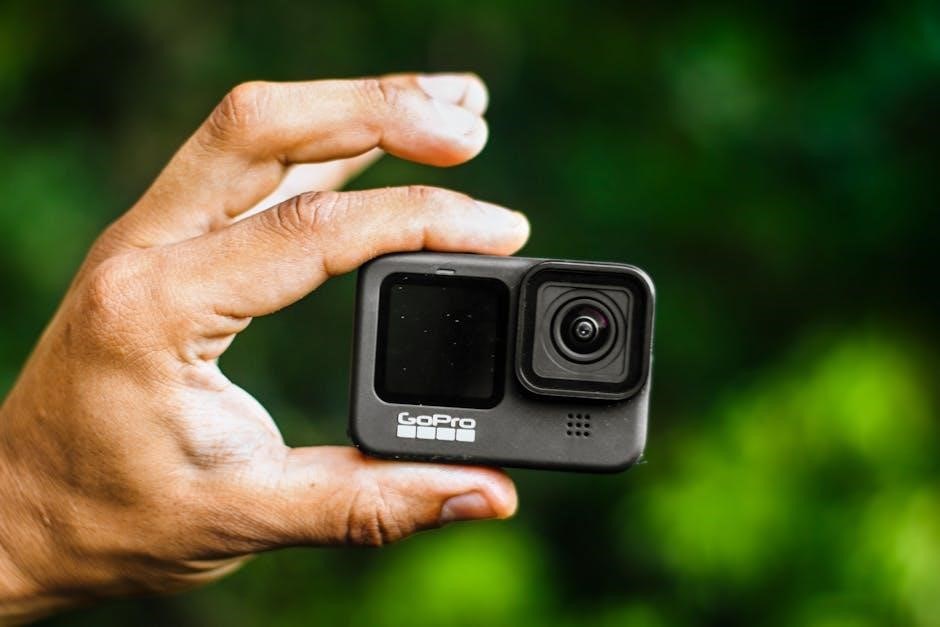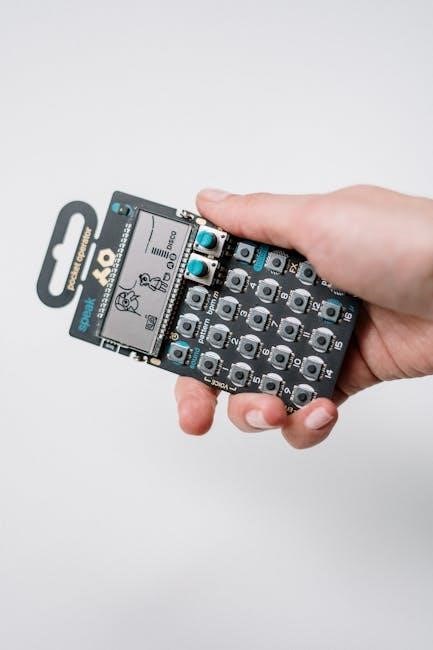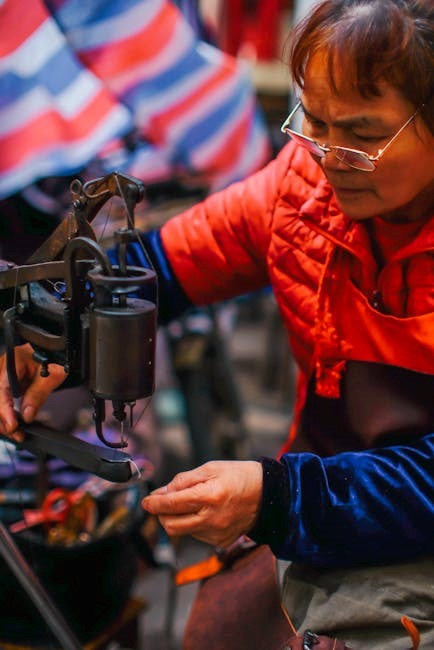Welcome to the Siemens Hydroranger 200 user manual. This guide provides comprehensive instructions for installing, operating, and maintaining your device, ensuring optimal performance in water management applications.

1.1 Overview of the Hydroranger 200
The Hydroranger 200 is a cutting-edge water level measurement device designed for precision and reliability in various applications. It offers advanced features for accurate data collection and is user-friendly, making it ideal for professionals and enthusiasts alike. This manual provides a detailed guide to understanding and utilizing the device effectively. Whether for industrial, environmental, or personal use, the Hydroranger 200 ensures optimal performance with its robust design and intuitive interface. By following this manual, users can unlock its full potential, ensuring accurate measurements and seamless operation in any setting.
1.2 Key Features of the Hydroranger 200
The Hydroranger 200 is designed with advanced features to ensure precise water level measurement and durable performance. It includes a robust stainless steel construction, ensuring longevity in harsh environments. The device offers high accuracy with minimal maintenance requirements, making it ideal for industrial and municipal water management applications. Its user-friendly interface simplifies operation, while the integrated data logging capability allows for efficient monitoring and analysis. The Hydroranger 200 also supports remote connectivity, enabling real-time data access and control. Additionally, it is equipped with advanced calibration options and error detection systems, ensuring reliable performance. These features make the Hydroranger 200 a versatile and reliable solution for water level monitoring needs.
1;3 Technical Specifications
The Hydroranger 200 is designed with precision engineering, featuring a robust stainless steel construction for durability in harsh environments. It operates within a temperature range of -20°C to 60°C and humidity levels up to 95% RH. The device is powered by a long-lasting lithium battery, ensuring continuous operation for up to 12 months. Communication interfaces include USB, RS-232, and Bluetooth for seamless data transfer. The sensor boasts high accuracy with a measurement range of 0-10 meters, making it ideal for water level monitoring. The LCD display provides clear readings, and the unit is IP68 rated for water and dust resistance. These specifications ensure optimal performance and reliability in various industrial and environmental applications.
Installation and Setup

The Hydroranger 200 installation involves unboxing, inspecting the device for damage, following step-by-step guides, and configuring initial settings for optimal performance and functionality.
2.1 Unboxing and Initial Inspection
Upon receiving the Hydroranger 200, carefully unbox the device and inspect for any visible damage. Ensure all components, including the main unit, mounting hardware, power cables, and documentation, are included. Verify the serial number on the device matches the one provided in the packaging or documentation. Conduct a visual inspection for signs of physical damage, such as dents, cracks, or loose connections. Check the power cord and cables for integrity. If any items are missing or damaged, contact Siemens support immediately. This step ensures the device is in proper condition before proceeding with installation.

2.2 Step-by-Step Installation Guide
Begin by carefully unboxing and inspecting the Hydroranger 200 for any damage. Ensure all components, including the sensor, mounting hardware, and power supply, are included. Step 1: Choose a suitable location for installation, ensuring proper alignment and accessibility. Step 2: Mount the device securely using the provided hardware, following the manufacturer’s torque specifications. Step 3: Connect the sensor to the main unit, ensuring all cables are tightly secured. Step 4: Power on the device and perform a self-test to verify functionality. Step 5: Configure the settings according to your application requirements. Finally, test the system under operational conditions to ensure accuracy and reliability. Always refer to the manual for specific torque values and safety precautions.
2.3 Initial Configuration and Settings
After installation, configure the Hydroranger 200 by powering it on and following the startup wizard. Connect to a power source and ensure all cables are securely attached. Use the control panel to set basic parameters like measurement units, data logging intervals, and communication settings. Install the provided software to access advanced features and synchronize data. Calibrate the device according to the manufacturer’s guidelines to ensure accuracy. Refer to the manual for specific calibration steps. Save your settings and test the device to confirm proper functionality. Regularly update firmware and settings to maintain optimal performance and compliance with operational requirements.
Operation and Functionality
The Hydroranger 200 offers intuitive controls for real-time water level monitoring, advanced automation, and precise data logging, ensuring efficient and reliable performance in various hydrological applications.
3.1 Basic Operations and Controls

The Hydroranger 200 is designed for intuitive operation. Begin by powering on the device using the main power button. The LCD display will illuminate, showing the home screen. Navigate through menus using the directional keypad. For basic measurements, select the appropriate mode (e.g., flow rate or pressure) and follow on-screen prompts. Use the start/stop button to initiate or pause measurements. The device automatically stores data, which can be reviewed later. Ensure all connections are secure before operation. Refer to the display for real-time readings and status updates. Always follow safety guidelines when interacting with the device.
3.2 Advanced Features and Functions
The Hydroranger 200 offers a range of advanced features designed to enhance functionality and user experience. Data Logging and Management allows for precise tracking and storage of water flow data, enabling detailed analysis. Remote Monitoring and Control capabilities enable users to access and adjust settings via a connected interface. Customizable Settings permit tailored configurations to meet specific application needs. Integration Capabilities ensure seamless connectivity with other systems for comprehensive water management. Advanced Calibration Options provide accurate measurements and adaptability to varying conditions. These features collectively ensure efficient, reliable, and adaptable performance, making the Hydroranger 200 a versatile solution for diverse water management requirements.
3.3 Maintenance and Calibration
Regular maintenance and calibration are essential to ensure the Hydroranger 200 operates accurately and efficiently. Start by cleaning the device regularly to prevent dust or debris buildup. Check and replace worn-out seals or gaskets as needed. For calibration, follow the step-by-step guide in the manual to adjust settings for precise measurements. Perform diagnostic tests periodically to identify potential issues early. Always use approved tools and refer to the manufacturer’s guidelines for specific calibration procedures. Schedule routine maintenance every 6 months or as recommended to maintain optimal performance. If unsure, contact Siemens support for professional assistance. Proper upkeep ensures longevity and reliability of the Hydroranger 200 in water management applications.
Troubleshooting Common Issues
Identify symptoms, check connections, and recalibrate sensors. Consult the manual for error codes and solutions. Contact support if issues persist for further assistance.
4.1 Identifying Common Problems
Identifying common issues with the Hydroranger 200 is crucial for maintaining optimal performance. Users may encounter problems such as sensor calibration errors, connectivity issues with the control system, or inconsistent power supply. Additionally, software glitches or outdated firmware can cause operational disruptions. Environmental factors like extreme temperatures or humidity may also affect accuracy. Regular monitoring and logging of device behavior can help in early detection of these issues. Understanding these common problems allows for timely interventions, ensuring reliable water management operations. Always refer to the troubleshooting section for detailed solutions and maintenance tips to address these challenges effectively.
4.2 Error Codes and Solutions
The Hydroranger 200 may display specific error codes to indicate issues. For example, E001 signifies a communication error, which can be resolved by checking cable connections and restarting the device. E002 indicates a sensor malfunction; clean or replace the sensor if necessary. E003 refers to invalid configuration settings, requiring a reset to factory defaults. E004 points to low battery levels, needing immediate recharging. E005 suggests software corruption, requiring a firmware update. Always refer to the error code list in this manual for detailed solutions. If issues persist, contact Siemens support for further assistance.
- Ensure all connections are secure for E001.
- Replace faulty sensors promptly for E002.
- Restore default settings carefully for E003.
- Recharge batteries immediately for E004.
- Update firmware regularly to prevent E005.

Regular maintenance and updates can prevent many of these issues.
4.3 Contacting Support and Resources
For any technical issues or inquiries, contact Siemens support via phone, email, or live chat through their official website. Visit the Siemens Support Portal for detailed resources, including manuals, FAQs, and troubleshooting guides. The portal also offers video tutorials and user forums for peer-to-peer assistance. Ensure to register your Hydroranger 200 to access exclusive support services. For urgent matters, the 24/7 helpdesk is available at support@siemens.com or +1-800-SIEMENS. Additionally, refer to the Siemens Service Center Locator for nearby authorized service providers. Always verify the authenticity of support channels to avoid unauthorized assistance. Reach out to the support team for any concerns to ensure optimal device performance and compliance with safety standards.

Safety Precautions and Compliance

Ensure safe operation by handling the Hydroranger 200 with care, avoiding exposure to harmful substances, and following all installation and operational guidelines provided.
5.1 Safety Guidelines for Operation
Ensure all safety precautions are followed when operating the Hydroranger 200. Always wear appropriate personal protective equipment, including gloves and safety goggles. Avoid operating the device in hazardous environments or near flammable materials. Regularly inspect the equipment for damage or wear and tear. Never bypass safety features or attempt unauthorized modifications. Keep loose clothing and long hair tied back to prevent entanglement. Ensure proper ventilation in the workspace to avoid inhalation of harmful fumes. Follow the recommended shutdown procedures to avoid sudden stops. Train all operators thoroughly on the device’s functions and safety protocols. Adhere to the manufacturer’s guidelines for load limits and operational parameters. Failure to comply may result in injury or equipment damage.
5.2 Regulatory Compliance and Certifications
The Hydroranger 200 is designed to meet rigorous international standards and certifications, ensuring safety and environmental compliance. It adheres to CE marking requirements, indicating conformity with EU directives. Additionally, the device complies with ISO standards for water measurement accuracy and reliability. Certifications include IP68 for dust and water resistance, ensuring durability in harsh environments. The product also meets RoHS compliance, guaranteeing the absence of hazardous substances. These certifications ensure the Hydroranger 200 operates safely and efficiently, aligning with global regulatory demands. Always verify local regulations to ensure full compliance during installation and operation. Proper adherence to these standards ensures optimal performance and environmental responsibility.
5.3 Environmental Considerations
The Hydroranger 200 is designed with environmental responsibility in mind. It operates on low power consumption, reducing energy usage and minimizing its carbon footprint. Proper disposal of the device and its components is essential to prevent environmental harm. Recycle batteries and electronic parts according to local regulations. Avoid exposing the device to extreme temperatures or hazardous materials, as this can damage its components and potentially harm the environment. Regular maintenance ensures optimal performance and reduces waste. Always follow Siemens’ guidelines for eco-friendly operation and disposal. By adhering to these practices, you contribute to sustainable water management and environmental preservation.

Accessories and Upgrades
Explore compatible accessories and upgrade options for the Hydroranger 200, including extended warranties and service plans, to enhance functionality and ensure long-term performance.
6.1 Compatible Accessories
The Hydroranger 200 supports a range of compatible accessories to enhance its functionality. These include data communication cables, power supply units, and mounting brackets designed specifically for seamless integration. Additional accessories like remote monitoring modules and software tools can be purchased separately to optimize performance. For the most accurate and updated list of compatible accessories, users are advised to consult the official Siemens product catalog or contact their local Siemens support team. Ensuring the use of genuine Siemens accessories guarantees optimal device performance, compliance with safety standards, and compatibility with existing systems. This ensures a reliable and efficient operation of the Hydroranger 200 in various applications.
6.2 Upgrading and Customization Options
The Hydroranger 200 offers flexible upgrading and customization options to meet specific requirements; Users can install software updates to access new features and improve performance. Hardware enhancements, such as additional sensors or communication modules, can be integrated to expand functionality. Customization allows tailoring settings and parameters to suit particular applications. Advanced users can modify configurations for specialized operations. It is recommended to use only approved components to ensure compatibility and maintain warranty validity. For complex upgrades, consulting the manual or contacting Siemens support is advised to ensure proper implementation and system integrity. Regular updates and customizations help optimize the device for evolving water management needs.
6.3 Warranty and Service Information
Your Hydroranger 200 is backed by a comprehensive warranty program, ensuring protection against manufacturing defects. The standard warranty period is typically two years from the date of purchase, covering parts and labor for defects in materials and workmanship. To maintain warranty validity, ensure proper installation, operation, and maintenance as outlined in this manual. For service requests, contact Siemens support with your device serial number and proof of purchase. Additional extended warranty options may be available for purchase, offering enhanced coverage and peace of mind. Refer to the warranty terms and conditions provided with your device for full details on coverage, exclusions, and procedures for obtaining service.

This manual provides essential guidance for the Hydroranger 200, covering installation, operation, and maintenance. For optimal use, refer to the troubleshooting section for common issues. Visit the Siemens support website for further assistance.
7.1 Summary of Key Points
The Hydroranger 200 is a sophisticated water management device designed for precise measurement and control. This manual has guided you through installation, operation, and maintenance, ensuring optimal performance. Key features include advanced sensors, user-friendly controls, and robust durability. Proper setup and configuration are essential for accurate readings and longevity. Regular maintenance, such as calibration and cleaning, prevents errors and extends the device’s lifespan. Troubleshooting common issues and adhering to safety guidelines are crucial for safe and effective operation. Accessories and upgrades can enhance functionality, while compliance with regulatory standards ensures environmental and operational safety. By following this manual, you can maximize the Hydroranger 200’s potential and achieve reliable results in water management applications.
7.2 Final Tips for Optimal Use
To maximize the performance of your Hydroranger 200, ensure regular software updates and maintain proper calibration. Always follow the recommended maintenance schedule to prevent wear and tear. Use genuine Siemens accessories to guarantee compatibility and reliability. Familiarize yourself with the user manual to explore all features and functions. For troubleshooting, refer to the error codes section for quick solutions. Keep the device in a clean, dry environment to maintain accuracy. Train all operators to handle the equipment safely and efficiently. Utilize the Siemens support resources for any technical assistance. By adhering to these guidelines, you can ensure the Hydroranger 200 operates at its best, providing accurate and reliable results for your water management needs.
7.3 Resources for Further Assistance
For further assistance with your Hydroranger 200, visit the official Siemens website for comprehensive support resources. Explore the detailed FAQs, user forums, and downloadable guides. Contact Siemens customer support directly for personalized help. Additionally, engage with the Hydroranger 200 community for shared knowledge and troubleshooting tips. Ensure you’re using the latest software by checking the updates section regularly. If you encounter any issues, don’t hesitate to reach out to Siemens support for professional assistance.

